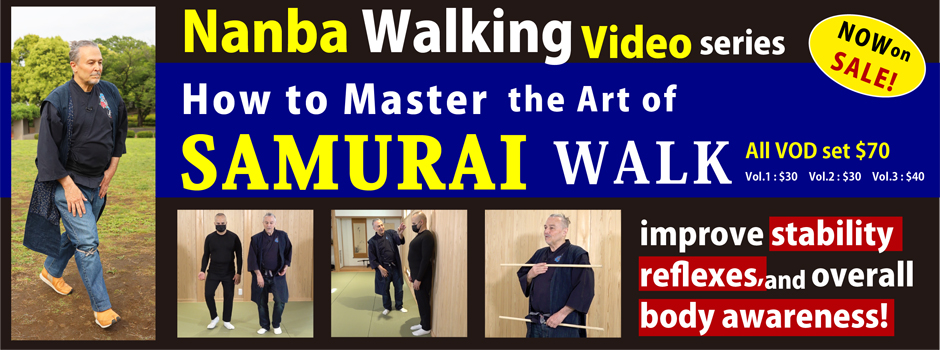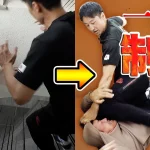How to Master the Art of SAMURAI WALK Vol.3 【Nanba Flow Movements: the Art of Easy Movement】
Here we introduce Nanba flow movements, which aim to provide ease of motion, natural poise, rhythm, and ease of movement. I demonstrate three specific Nanba flow movements out of the seven total. The first movement is the Nanba Quick Step, which involves transferring weight from one foot to the other while keeping the body centered. The second movement is called Bird Wing, which mimics the motion of bird wings during flight. The third movement is Walking or Running in Place, which involves stepping in place while connecting the right side of the body with the left side. I emphasize the importance of listening to your body and finding the most natural and comfortable angles and ranges of motion for each movement. These movements can be practiced at different speeds and can be accompanied by music for added enjoyment. They provide a unique approach to exercise, focusing on ease of movement, connectivity, and natural rhythm, and offer a fun and effective way to improve flexibility, coordination, and overall body awareness.
Nanba Flow Movement #1, Nanba Quick Step
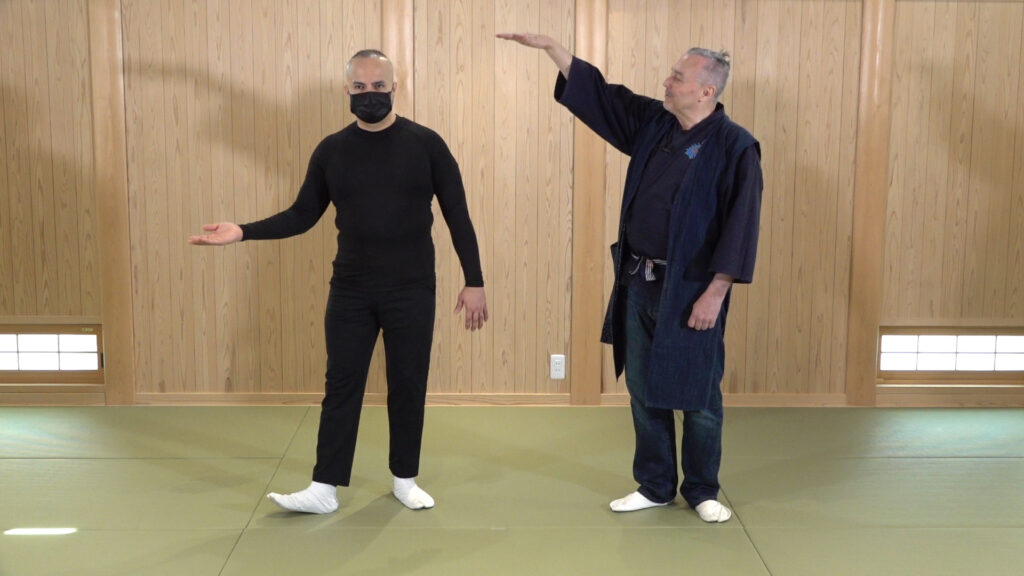 Flow Movement #1, Nanba Quick Step. In this movement you shift your weight rapidly from one foot to the other, extending the hand on the same side of the extended foot. When you shift your weight be sure to keep your head level, and face forward. Aim for a floating feeling, as if you are slightly levitated off the ground.
Flow Movement #1, Nanba Quick Step. In this movement you shift your weight rapidly from one foot to the other, extending the hand on the same side of the extended foot. When you shift your weight be sure to keep your head level, and face forward. Aim for a floating feeling, as if you are slightly levitated off the ground.
Nanba Flow Movement #2, Bird Wing
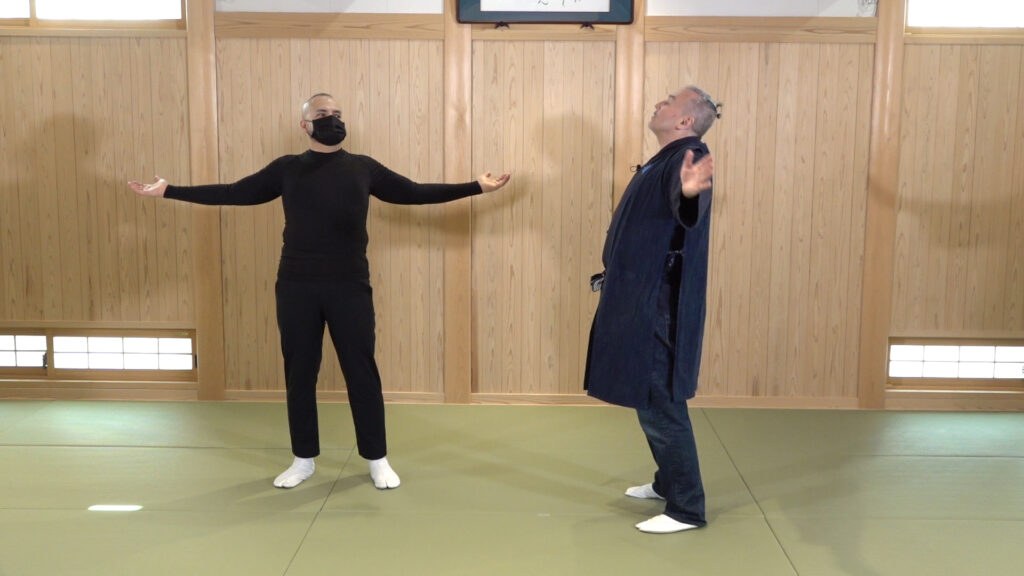 Flow Movement #2, Bird Wing. In this movement you move your arms in a figure 8 motion, mimicking the movements of a bird wing. When you stretch back the palms are open up, and when you bend forward the palms are facing out. Stretch your fingers when you rotate the arms to help open and close the shoulder blades.
Flow Movement #2, Bird Wing. In this movement you move your arms in a figure 8 motion, mimicking the movements of a bird wing. When you stretch back the palms are open up, and when you bend forward the palms are facing out. Stretch your fingers when you rotate the arms to help open and close the shoulder blades.
Nanba Flow Movement #3, Nanba Walking in Place
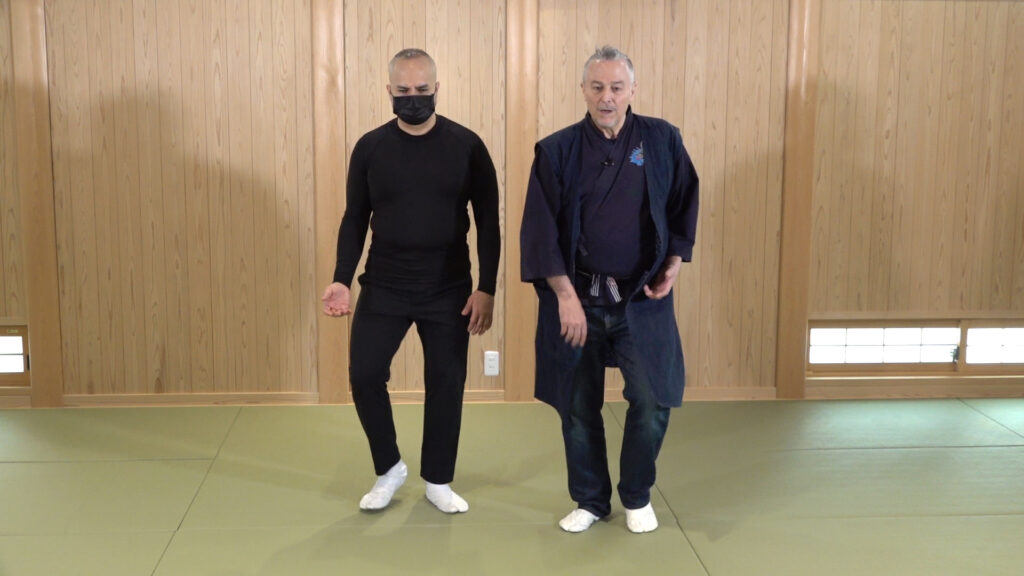 Flow Movement #3, Nanba Walking in Place, the movement closest to Nanba Walking. Start slowly by alternately raising and dropping your heels, ensuring that the palm of the hand on the heel drop side is facing down, and the palm of the hand on the raised heel side is facing up. Once you get the rhythm of this then convert the heel drops to steps, while keeping the hands and feet on the same side moving in the same direction. In time you will be able to feel the motion as being like two alternating pistons, where not just the hands and feet, but the entire side of the body moves down and up. However, this is a subtle feeling inside the body. You should stay centered throughout and not rock the body side to side.
Flow Movement #3, Nanba Walking in Place, the movement closest to Nanba Walking. Start slowly by alternately raising and dropping your heels, ensuring that the palm of the hand on the heel drop side is facing down, and the palm of the hand on the raised heel side is facing up. Once you get the rhythm of this then convert the heel drops to steps, while keeping the hands and feet on the same side moving in the same direction. In time you will be able to feel the motion as being like two alternating pistons, where not just the hands and feet, but the entire side of the body moves down and up. However, this is a subtle feeling inside the body. You should stay centered throughout and not rock the body side to side.
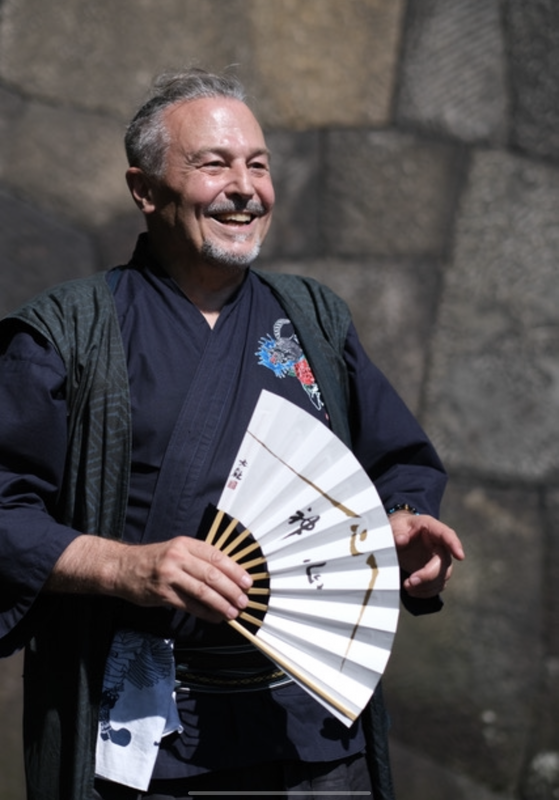 William Reed
William Reed
Born in the United States, William Reed is a long-time resident of Japan, and is currently a Professor of Japanese Culture at the International College of Liberal Arts (iCLA) at Yamanashi Gakuin University. He holds a 10th-dan in Shodo from the Zen Nihon Shodo Rengokai, and is a Headquarters appointed Vice Chairman of the Japan Calligraphy Education Association. He holds an 8th-dan in Aikido from the Aikido Yuishinkai. He holds a Tokubetsu Shihan rank in Nanba, the Art of Physical Finesse. He is aiso Certifed as a shihan in WAGI, a health method based on traditional japanese Kyogen theater, shown to extend years of a healthy lifespan. Director of the International Committee for the Mugairyu Hogyokukai (2nd-dan). A regular commentator on Yamanashi Broadcast Television Tetete TV, Navigator for NHK World Journeys in Japan, numerous documentaries, and has appeared on the long running Sekai Fushigi Hakken (Discover the World’s Mysteries). Certified in 2009 by World Champion of Public Speaking Craig Valentine, he has written a bestseller on this in Japanese 世界最高のプレゼン術 (Kadokawa Books, 2014). He is also author of Song of the Brush Dance of the Ink (Morgan James Publishing, 2022). He appears in the bestselling DVD on Nanba Walking 本当のナンバ歩き, and the DVD on Introduction to Mugairyu Iaido, both published by BAB Japan.
Samurai Walk: Mastery of Sword and Letters:
http://www.samurai-walk.com

